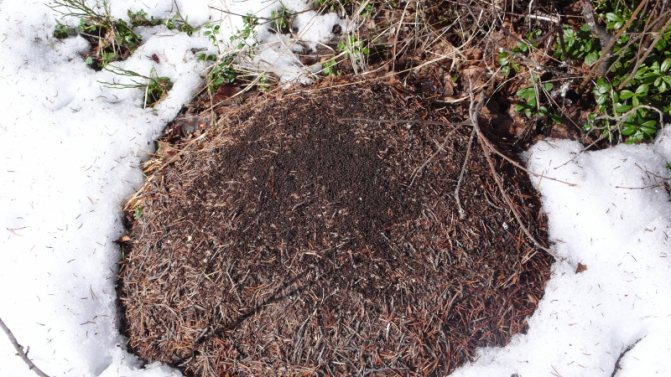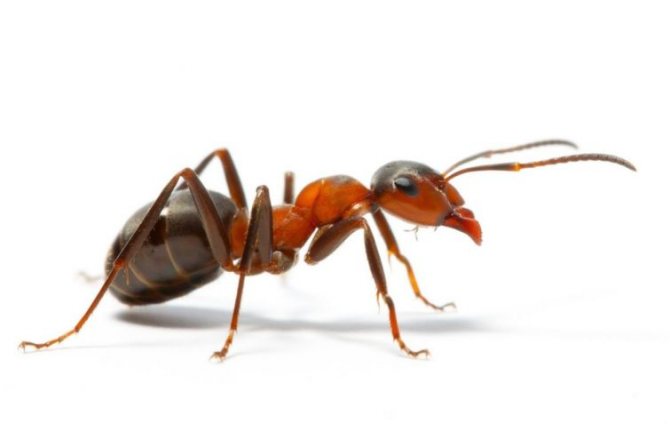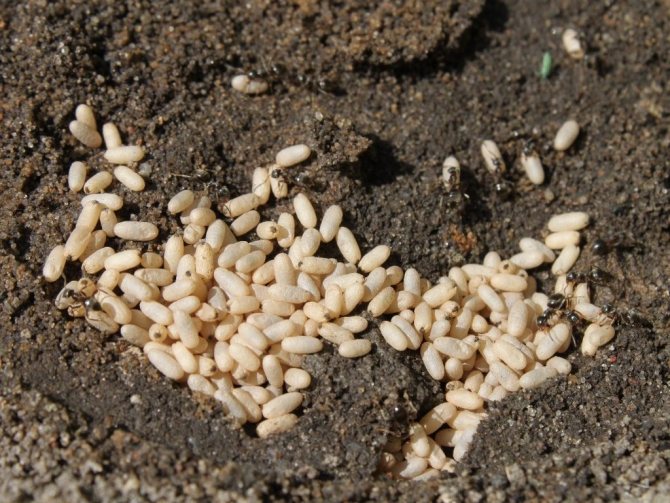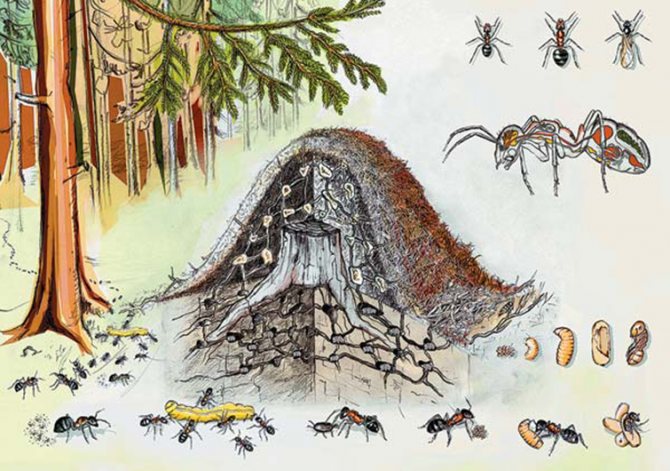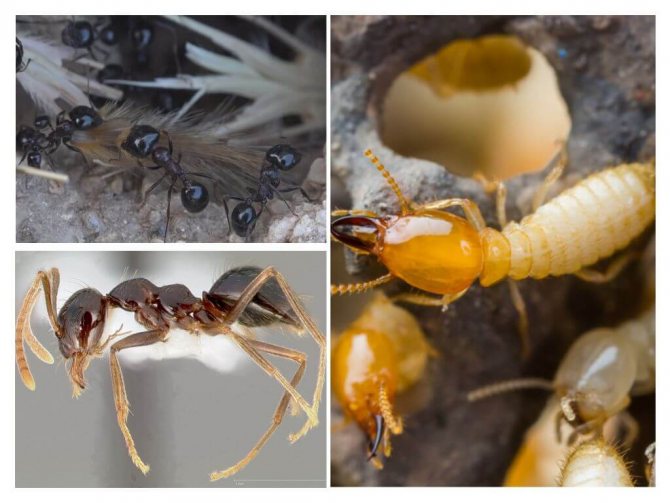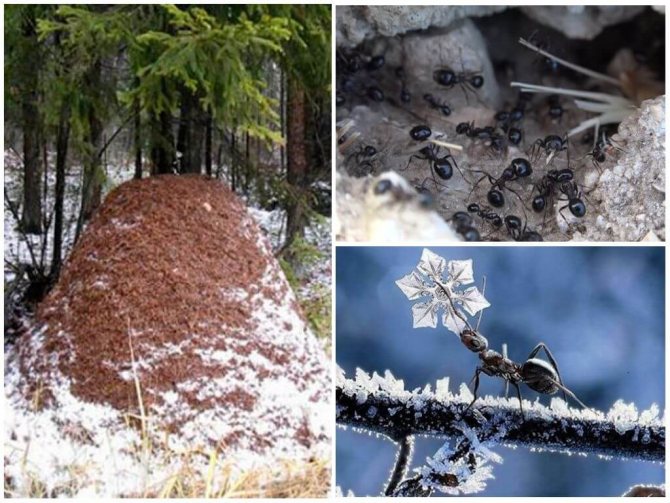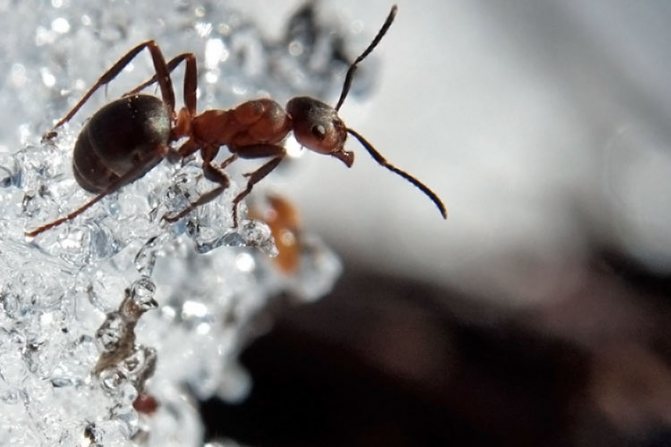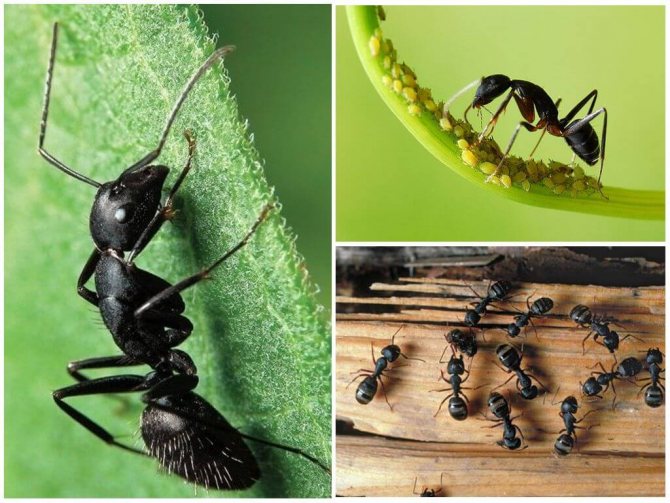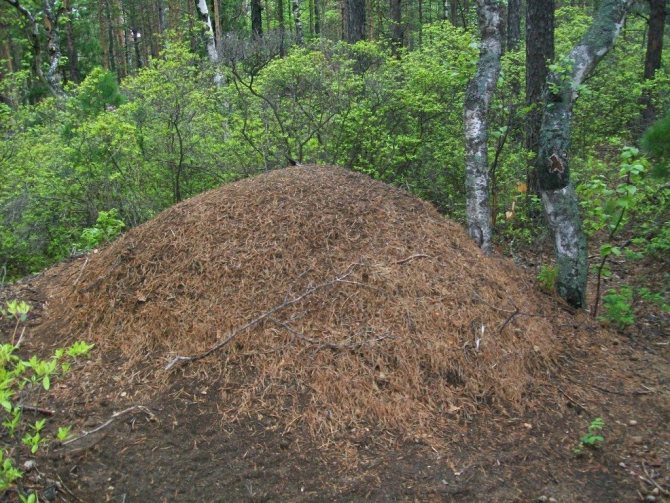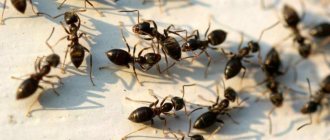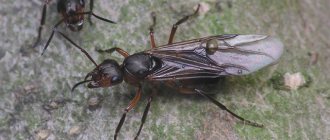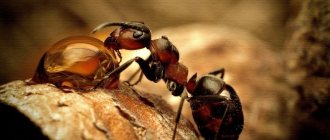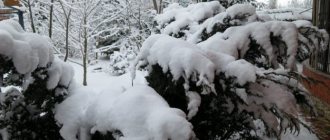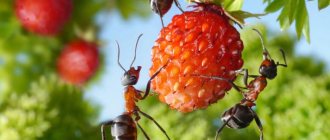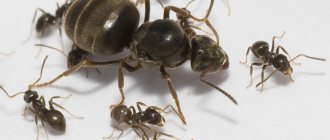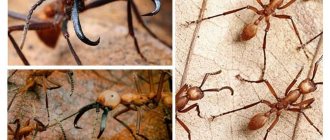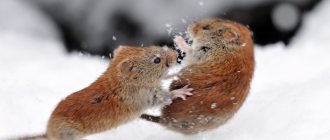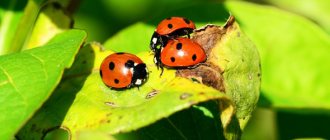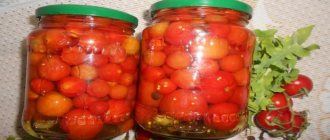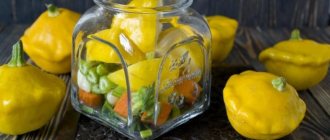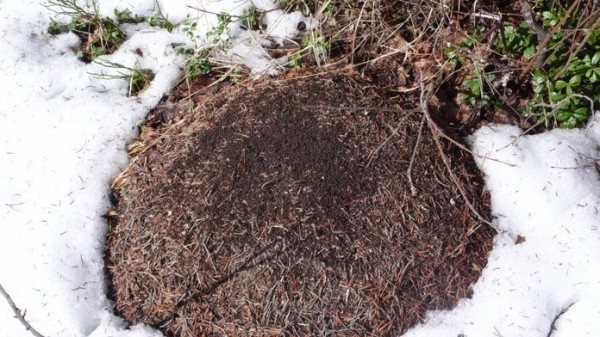
To the disappointment of many, not all species of ants go into hibernation; most are fully preparing for the upcoming cold weather. How does it happen (how do they spend the winter and how do they prepare for it)? What are the reasons for the appearance of these insects in the apartment in the winter and how can they be removed? We propose to consider the answers to the proposed and related questions in the presented material.
How ants winter in nature. The role of ants in nature
Most ant species base their daily diet on both simple plant and animal foods. These insects drag into their home almost everything edible that they come across on the way. Food is stored in an anthill, after which it is divided between individuals inhabiting the colony.
The larvae get protein food. Such are the eggs of other insects, the remains of beetles, caterpillars, and small animals. The consumption of such food contributes to the early development of larvae and their transformation into adults.
Sexually mature, mature ants consume carbohydrate, easily digestible food. They give preference to all kinds of seeds, fruit pulp, tree juices, honey.
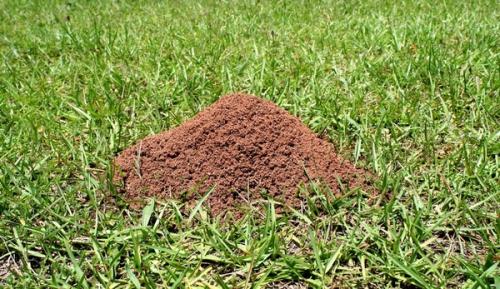

There are predator ants. A striking example is the species of cerapachis. The latter are dragged into the colony exclusively by the remains of insects. Sometimes they do not disdain carrion in the form of half-decayed bodies of animals.
The main source of carbohydrates for carpenter ants is the so-called gum. The substance is a tree resin that is released from the trunks in areas of bark damage.
Reaper ants choose solid and coarse plant food as the basis of their carbohydrate diet. The individuals who are known as soldiers in the colony spend most of the day grinding all kinds of seeds with their powerful jaws. The result is the production of a specific gruel. The whole colony feeds on the latter.
Despite the fact that ants are only concerned with finding food and arranging their own colonies, they bring a lot of benefits to ecosystems. Such forest workers not only loosen the soil, enriching it with oxygen and trace elements, but also destroy a whole mass of insects that damage vegetation.
Among other things, ants carry flower and grass seeds. Thus, plants occupy new areas. In general, the presence of ants in a certain area is the key to maintaining the correct balance in nature.
Hierarchy of ants. "PROFESSION" ANTS
An ant colony or family is not just a bunch of ants, it is a well-coordinated system in which each individual performs its functions, ensuring the existence of the whole family. The larger the colony becomes, the more noticeable and deeper this "division of labor" is. In some species, specialization manifested itself in the difference in individuals in size and external structure, for example, the caste of workers was divided into SOLDIER and the WORKERS proper. However, in most species of ants, individuals performing different functions in the nest look the same outwardly. Scientists believe that the basis for such a division of functions within the colony is different "mental inclinations" in different individuals in the family. It was the mental and behavioral characteristics that became the prerequisite for the emergence of the so-called "polyetic groups" or "professions" among the caste of working ants. Below are some of them. SOLDIERS.Often large-headed individuals that are large compared to other workers. Depending on the species, they can perform different functions: protecting the colony, cutting and grinding prey, they can also serve as reservoirs for liquid carbohydrate food.
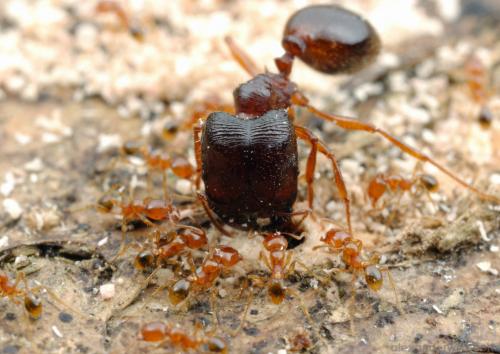

Soldier and Workers Carebara affinis Source: https: //
PADI COLLECTOR. They take care of colonies of aphids or worms, milk them and transfer their secretions to the nest, which serve as food for the entire colony. In many species, the honeydew collector (the sweet secretions of aphids and other insects) is assigned to a specific colony of aphids. For the first time to this colony it is carried out or brought by other ants. Honeydew pickers often serve as a kind of "reserve" of the family, and in the event of collisions between the inhabitants of the anthill with any of the neighbors, they are mobilized for a "war".
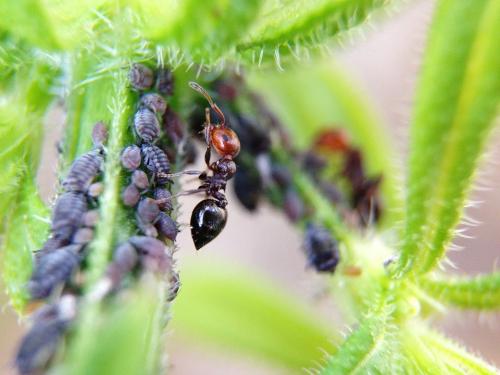

"BARRELS". Found in steppe and desert species. They serve as reservoirs for the accumulation of sweet syrup from the secretions of aphids and other insects, sometimes they accumulate water in themselves. The largest workers serve as "barrels", and small individuals serve as foragers.
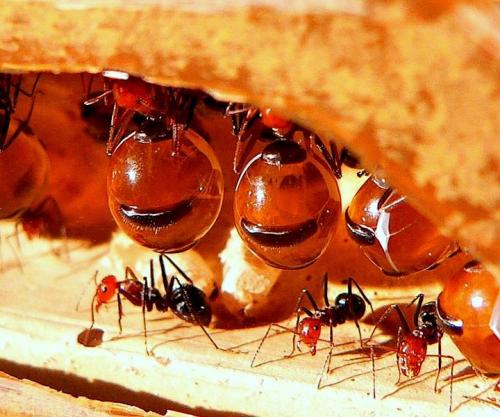

, via Wikimedia Commons
NANITIES. Most often, they are young individuals. They live in the nest, take care of the queen and brood. In many species, as they grow older, they "acquire" a different profession.
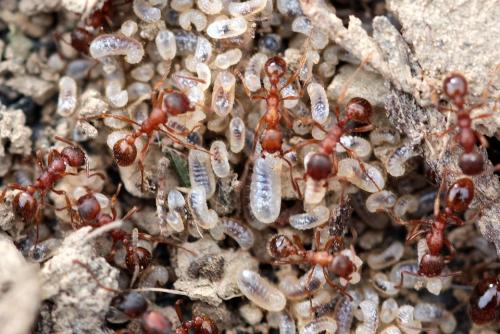

FOODS. Ants that scout the area in search of food. In some species, there are two types of foragers - active and passive. The former serve as scouts. Having found food, the scout mobilizes hundreds or even thousands of passive foragers to hunt or collect seeds, who themselves do not go out to search for food.
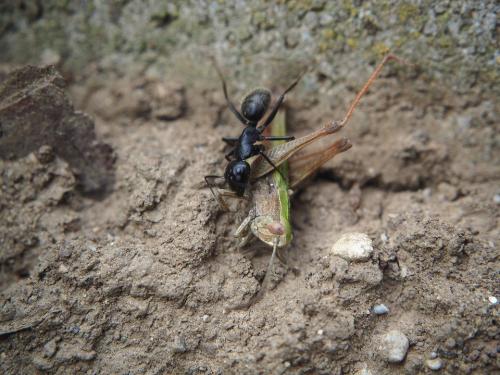

In connection with the presence of a ground dome, some ants, for example, red forest ants, have a special group of WATCHING ANTS, first described by PI Marikovsky. They usually become the most experienced individuals, mobilizing the family to protect the anthill when there is a threat of an attack on the nest.
Among other professions, we can mention SANITARY ANTS, carrying out the remains of eaten insects, as well as dead brothers and empty cocoons away from the nest, NIGHT WATCHERS, described by the same Marikovsky, who sleep during the day and guard the nest at night and BUILDERS engaged in digging tunnels and collecting construction materials domes.
In order not to miss anything interesting, do not forget to subscribe to our channel. We also invite you to take a look at our community.
Varieties
Among the ants living in the forest, there is a dangerous species - red or fiery. Its adult representatives have a sting and poison, which contains the alkaloid substance solenopsin. Such goosebumps are small - no more than 2 - 4 mm. Their antennae consist of 10 segments, ending in a club with 2 segments. The dwelling of red insects, that is, an anthill in the forest, is an earthen hill, reaching a height of half a meter.
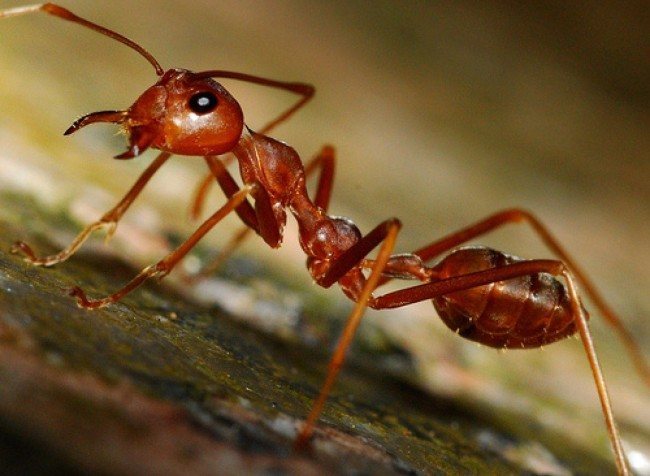

The most common species, the red ant, also lives in the forest. It has a large body size - from 4 to 9 mm.
The abdomen and occipital region are black, while the chest and the rest of the head are orange. This type of insect creates an anthill up to 2 meters in size from soil and food debris. Females do not leave the nest in order to form new colonies in another place. They replace old queens after their death.
There is also a black-brown ant in the forest. The size of the body of females is 1 - 2 mm, workers are from 5 to 8 mm. The body is painted black and gray. Families of such insects are few. Females tend to move out and create separate colonies. Often the anthill is located under the stones and looks like a low mound.
Relationship and communication of ants
Among these small insects, there is also a kind of power struggle. For example, in colonies of red ants, cases of the capture of settlements of another species were observed.The queen-queen finds a colony of black or forest relatives weakened as a result of the attack and takes the place of the dead queen. Then she lays eggs, and when red ants hatch from them, they actually enslave a colony of another species.
In nature, the opposite situation can also be observed, when working individuals of neighboring anthills establish contact and exchange food. This is a kind of message to neighbors about peace and a proposal for unification into one colony.
This is how interestingly the anthill is arranged - this is an amazing structure with a complex organization, reminiscent of a big city. How much time and labor does this tiny insect cost to rebuild an ant colony, the aerial part of which is threatened at every moment by predators or natural phenomena.
Ants and frost. How do ants prepare for wintering?
It turns out that not all ants are sleeping: even in the cold season, some families live a normal life. Of course, they are deprived of the opportunity to go outside and are less active than in summer, but they do not hibernate, continuing to build tunnels, feeding the queen (queen), and sometimes growing mushrooms and caring for "domestic animals". In very cold regions, where the soil freezes to a great depth, ants still spend most of the winter in a sleepy state. But how do ants prepare for winter when they don't have to sleep?
To provide the colony with food for the entire cold season and successfully overwinter, little workers work all the warm season. They catch a huge number of caterpillars, bugs, beetles and other insects that are pests of garden crops. Part of the prey is used to feed the larvae, but the rest is stored in special chambers. Among the reserves may be seeds, and killed insects, and fruits of plants.
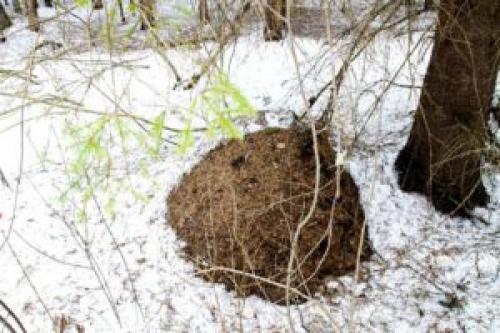

Some worker ants are constantly expanding the dome of their home. This is especially true for red forest ants: their "heaps" can reach more than 1 m in diameter and about 50 cm in height. Inside the dome there are both living chambers and storage facilities. Loose material serves as an excellent protection from the cold for underground rooms, where insects go for the winter.
In an effort to protect the wintering larvae, they are transferred to the most protected chambers, where the temperature does not drop below critical. Young animals need protein nutrition: for this, ants drag a variety of insects into their home. The uterus is also intensively supplied with protein feed: from this, it begins to lay a special type of eggs - trophic (nutritious). The larvae cannot hatch from them, but the eggs themselves serve as food for the uterus in the winter.
With the onset of cold weather, all entrances to the anthill are closed. It is difficult for an outside observer to determine whether its inhabitants are sleeping or not.
Winter neighbors
In addition to the owners of the anthill themselves, aphids, all kinds of beetles, moths and larvae of the above insects also live next door to them. They help ants survive in winter, as, for example, aphids release a sweet nutritive enzyme, which, as we already know, ants convert to glycerin.
But there are also such neighbors who bring great harm to the owners, eating food supplies and larvae. Many species of insects, hiding from the cold, find shelter in dwellings abandoned by ants during the winter, located on the surface of the earth.
These are such interesting hard workers-ants who are trying to use all the opportunities that the environment gives them in order to continue to live and reproduce as effectively as possible.
Traditional methods
In addition to garlic, other means were used in the fight against the dominance of the apartment by ants. For example, black and red ground pepper was poured near the holes. So you can gradually destroy the whole family. Small particles of pepper stick to the paws.Then eat insects. When it gets into the water, its bitterness, burning, warming effect is activated. The entire nest gradually dies out, even located deep in the wall and under the floor.
Boric acid, once it gets into an insect, eats away at it from the inside. Since the ant is able to pick up the balloon, it will bring it to the nest, to the inhabitants of the family who do not go outside. The big one will begin to gnaw and die before it reaches the nest. It is enough for 4 - 6 weeks to periodically change the poison to fresh, and the ants will not be in the house for a long time.
If you mix the jam with yeast, pour it on a cardboard box and put it on the path, then the insects will not go further, get drunk, fill their tanks and run back. Once in the ant's stomach, the yeast begins to ferment, releasing a lot of gas. As a result, the insects simply burst like air-blown balls.
Ants constantly climb the trash heaps, bring bacteria and fungus into the apartment. They can be the culprit for disease in humans and animals. Bite children in large crowds. By removing ants, you will protect your home from disease, dirt, and unpleasant neighborhoods. After all, sneaks climb into food, and it is unpleasant to finish eating after them.
Tags: what, ant, temperature, die
About
«Previous post
Prophylaxis
We figured out how to get the ants out of the apartment. Means for this exist in large quantities, both folk and chemical. But how to make sure that the ants do not visit the apartment at all? To do this, you need to maintain perfect cleanliness in your home. There should be no crumbs or debris in the kitchen. Kitchen tiles on the walls must be washed regularly from a variety of splashes. You need to take out the trash regularly. Cereals and bulk materials should be kept in tightly sealed containers or bags. Food for animals also needs to be controlled - it is in it that the largest concentration of ants can often be found. It is advisable to remove bowls with their food after each feeding of pets until the next time.
Uninvited guests in the form of red ants can settle in any apartment or country house. In search of food for their queen, who lays eggs, red ants travel long distances. And so that the fertile place is not lost, they leave a specific smell for their relatives, along which the entire ant colony moves.
Red ants in an apartment are a real disaster. They are omnivorous, as they feast on not only the remnants of food from our table. Leather, clothing, electrical insulation, any food, even wounds on human skin, can become a source of nutrition
... Red ants are not only annoying with their neighborhood, but also
are the source of serious diseases
.
Knowing that a nest of insects can be located far outside the home, a natural question arises: how to get rid of red ants in an apartment?
Treatment
The medicinal properties of ants have been known for a long time. From time immemorial, people made tinctures, ointments from them. These insects are still used today. The main active ingredient in such preparations is formic acid.
Acid-based drugs help in the treatment of arthritis, rheumatic and atrophic, neuroses, dizziness in old age. They can also alleviate the condition of people with hepatitis.
From ants, preparations with a hemostatic effect are prepared. Their venom also contains antibiotics that can fight fungal and bacterial infections, including staphylococci and streptococci.
Before killing these little laborers in your plots, evaluate the benefits they bring.
Features of survival in frost
Depending on the habitat, red ants are divided into domestic and forest ants. Despite the similarity in name and color, these are two completely different species, differing from each other not only in their way of life, but also in appearance.
Forest ants
The head is relatively large and equipped with powerful mandibles that can easily bite through the skin of an animal, as well as tissue of medium thickness. Above them are small flexible antennae that act as an organ of touch and smell. Even higher are compound faceted eyes and three simple eyes.
The chest is connected to the head by a flexible bridge - a stalk. It has three pairs of long, well-developed legs, ending in tenacious claws. The chest is attached to the abdomen by two segments called the petiol.
The abdomen is the most prominent part of the body. As a rule, it is darker in color than the head and chest. The abdomen is divided by segments into several parts and in workers it ends with a sharp sting, into which their underdeveloped ovipositor turns.
Working red ants have no wings. Only males and females have them at the time of mating flight from the nest. In the future, females lose their aircraft and differ from working individuals only in body size.
House ants
Ginger house ants are relatively small in size. An adult rarely reaches 3 mm in length. In this they differ sharply from their forest counterparts, which are almost three times larger. They also differ in color. "Lesoviks" are much darker, their abdomen is almost black, while house ants are bright amber in color and have two transverse stripes on the back of the body. Otherwise, domestic ants have almost the same body structure as forest ants.
An interesting fact is that, unlike their larger forest counterparts, house red ants do not bite. If the former can pinch rather painfully with their mandibles, then the latter are not capable of this, with all their desire. Their size is so small that the jaws do not open wide enough to capture a piece of skin.
If we touch on the history of the emergence of species, it turns out that the little houses were brought to Russia from warmer southern countries. India is considered their homeland, from where they settled all over the world. Forest red ants are native inhabitants of Russian forests. They perfectly adapted to the peculiarities of the local climate, and they tolerate the most severe frosts well. Domestic ants cannot boast of this, and in Russia they are able to survive only in a warm human dwelling.
Before the onset of the cold season, adults carefully clog all external passages from the anthill in advance with dry grass and earth. Passages open only for the time when you need to replenish food supplies. But this happens only when the ambient temperature rises.
We offer you to familiarize yourself with: Anemones (85 photos): species, cultivation, care, reproduction and planting
If in winter the upper part of the anthill gets wet, a special detachment transfers food supplies to chambers that are located deeper. Ants hibernate in their insulated dwelling until March-April. The main sign of the approaching release of insects to the surface is the laying of eggs by the uterus and the gradual resumption of activity. In the spring, the vital activity of adult insects is fully resumed.
Living in different regions and under different climatic conditions, all these insects winter in their own way. For example, polar species have to spend the winter from 7 to 9 months. They manage to feed their offspring in that little warm period of time when there is no snow. In its dispersal to the north, insects are stopped only by the border, beyond which, even in summer, the soil does not warm up deeper than 30 cm.
For example:
- Kamchatka people arrange their houses on hummocks, the depth of their anthills ranges from 10 to 40 cm.The temperature of the ground in summer is very important for them for the normal development of larvae.
- Ants living in the hot regions of Central Asia and the Mediterranean winter for a maximum of 1 to 2 months.
- Ants that live in Turkey do not hibernate every year. They hide for wintering only when severe weather conditions come, which does not happen very often. But this species of insects still prepares for wintering every year, making food reserves, equipping dwellings and feeding larvae.
- The well-known pest of the pharaohs, the ant, or as it is also called - domestic, never prepares for the winter and does not go to bed. This is due to the fact that his homeland is in the tropics, where there is no climate change. He lives excellently in a person's dwelling and can die only when, by some accident, he remains on the street.
In winter, the larvae stop their development, do not pupate, pupae stop metamorphosis, uterus stop laying eggs. Preparing for winter, adult workers are saturated with aphid secretions. These secretions contain a large amount of sugar, which is converted into glycerin in the body.
Judging by the research of scientists, ants do not have a strict ban on leaving the anthill in winter. Insects simply move in those temperature zones where they will not freeze. But basically, this temperature is kept only inside the nest. When the thaw comes, the anthill warms up, and the insects crawl to the outermost exits, and when the air temperature rises strongly, they open several exits and crawl out to the surface. This often happens even in winter.
How does an ant colony work?
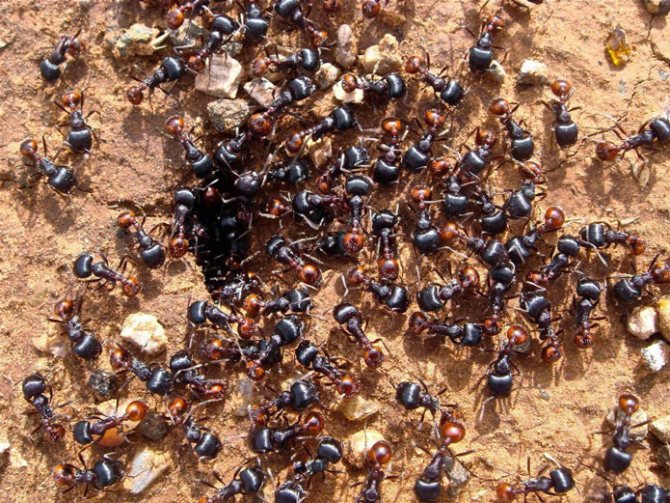

The social hierarchy within an ant colony is often compared to the construction of a bee hive. These two species are similar in many ways, but the behavior of ants is still much more complex. As in human society, these insects have a strict division into classes. The anthill is designed so that each sexually mature individual has its own purpose.
Depending on the set of certain qualities, each insect is assigned to a particular social post. In this case, the personal qualities of the individual are taken into account - excessive aggressiveness, a keen sense of smell, reaction speed. The hierarchy of any anthill contains the following categories of individuals:
- invaders - the most aggressive group in the anthill, carrying out attacks on neighboring colonies, seizing territories;
- orderlies - isolate sick and wounded ants, if necessary, play the role of surgeons - the injured limb is often amputated (gnawed off);
- builders are one of the largest social groups. They are engaged in the repair of premises, the outer covering of the dwelling. Throughout their lives, they dig new tunnels, transfer needles and twigs, maintain the microclimate inside the anthill;
- nannies - take care of the offspring, from the appearance of the egg to the maturation of the individual. They are constantly next to the larvae, turn over, control the process of hatching from eggs and feed the growing offspring;
- guards - are engaged in the protection of the entrances and exits of the anthill, in case of an attack, they attack the enemy and do not allow him to get inside the dwelling. Among this category there are the most casualties; attacks on neighbors are a common thing for neighboring colonies. In addition, birds and some animals love to feast on ants, and the guards never leave their posts, protecting the entrance to the last.
- foragers. The largest group in the colony. Their mission is to get food for the entire anthill. Every day, hunters go in search of food - grass seeds, dead and weakened insects, fruits and berries. If one ant finds a large insect (caterpillar, beetle), then using special signals it contacts its fellow tribesmen, "telling" about the prey. Together, insects can drag even a dead rodent.Often attacks on weakened or injured bees, worms, and mice occur. From numerous bites, the victim dies and becomes food for the colony;
- shepherds. Another amazing feature of these insects is that they have peculiar pets. The herb aphid feeds on plants, and the liquid released in the process - honeydew - is collected by ants. This liquid is a waste product of aphids, has a sweetish taste and serves as a kind of delicacy for insects. The carbohydrates in honeydew provide energy to the ants. Therefore, aphids are collected in a kind of "herd" and protected in every possible way (for example, from theft by ants from neighboring colonies). To increase the amount of honeydew, shepherds tickle the belly of their cows, stimulating the production of a valuable substance;
- carriers - work together with shepherds, their main task is to carry honey honeydew into special chambers. If necessary, engage in battle with the invaders;
- storekeepers - are responsible for keeping stocks inside the cells. They monitor the maintenance of the temperature regime and the safety of stocks. It is on them that the life of the colony depends in the winter months, since the competent preservation of food resources ensures the prosperity of the anthill;
Depending on the habitat, special "professions" appear. For example, leaf-cutting ants that live in forests collect the leaves of certain trees and plants. Then they are transferred to the anthill, twisted in a special way and used to grow mushrooms, which are one of the main products in their diet.
Ant eggs. Sad story - why my uterus is eating its laid eggs and how to stop it
An anthill is a small closed world that lives by its own laws. Despite the long history of observations, scientists-myrmecologists have not been able to fully explain all the processes taking place in it. Sometimes in the formicaria, that is, a domestic anthill, events occur that are difficult to explain and difficult to influence: gradual dying, the uterus eating its eggs when it just starts eating them for no reason, brood reduction or other atypical behavior. Fortunately, what to do when the queen is eating eggs is a more or less studied question.
Possible reasons
The situation in which the queen is eating her brood can be caused by the following reasons:
- Lack of nutrition. If the queen realizes that "difficult" times have come, and the colony is in danger, she ensures, first of all, her survival, replenishing the body's reserves in such a simple way.
- Avitaminosis. Unlike the first point, it manifests itself in conditions when there seems to be food in the anthill. This could be due to a lack of animal protein such as insects in the diet.
- Diseases. When a colony is infested with mold spores, micro-mites, or other natural enemies, the brood can also be eaten by the brood.
- Stress. Loud constant noise or bright light, non-compliance with temperature or humidity - all this can cause the queen to start eating ant eggs.
These are reasons known to science, but there may be some more. Sometimes it happens that even though the keeper tries to eliminate them one by one, the situation does not change. Unfortunately, sometimes you just have to come to terms with what is happening and slowly watch the extinction of the colony. And sometimes this effect disappears as suddenly as it appeared and everything returns to normal.
How to fix the situation
All an anthill owner can do is try to find and then eliminate the causes of this behavior described above. But in no case should the uterus be disturbed and directly interfere with the process. From such excitement, she can die or stop rushing forever. Therefore, you need to act extremely carefully and carefully:
- find out if any new factors have appeared on the eve of the event;
- to increase the food ration, introduce new products, proteins, carbohydrates, vitamins;
- create the most comfortable conditions in terms of temperature, humidity, silence and comfort.
These measures should be enough for the uterus to stop eating eggs over time. If the situation has not improved, you can try to relocate to a new, larger acrylic formicarium. Perhaps the queen simply decided that the existing anthill was too small for the colony. Then this measure will help rectify the situation.
Photo
Next, you will see a photo of the hierarchy of ants - from workers to soldiers:
Ants are social creatures. If an ant is isolated in a jar and even fed well, it will die anyway: from loneliness, understanding of its uselessness, from longing for family. According to entomologists, ants are social beings, and they have no life without a society of their own kind.
The anthill is a perfect architectural structure. The top 10 cm layer of sticks, pebbles, pine needles is an ideal roof. Such a roof does not allow moisture to pass through, does not rot: an excellent heat insulator. The "living" area of the anthill reaches 15 square meters. The number of rooms reaches one hundred.
Storage rooms for eggs, larvae and ant pupae are located under the dome. The main part of the anthill is underground. Its galleries up to 1.5-2 meters go deep and not only because of safety, but also for the sake of being able to extract water. In some underground chambers, food warehouses are located, in others live ants hang, storing honey in their goiter. Common rooms are for relaxation. There are waste bins, cemeteries, toilets.
The queen lives separately, surrounded by a retinue of ten working ants. She alone lays up to 40,000 eggs per day. Insects take care of the home. They are protected from external encroachment by the anthill patrol zone, reaching a diameter of 10-12 meters.
Throughout the summer, ants ventilate the rooms, in sunny weather they warm up the backs in the sun and run to the inner chambers in order to heat the rooms like heating devices. The anthill has strict discipline, distribution of roles and hierarchy. The queen rules all. Families are polygamous (one female in the nest) and monogamous. And in all families, winged ants appear at the same time - brides and grooms, regardless of the number of females. For the rest of the time, only girls appear - working individuals who do not produce offspring while the queen is alive, but they work in guards, in repairs and construction, fight enemies and serve in intelligence, are engaged in foraging. The queen lives for 15-20 years, and the worker ants live for about 7 years. Males die after mating (they do not participate in the life of the anthill).
Information is transmitted by reading through the pheromones left by the sisters, touching each other with antennae, and also by ultrasound. If one ant noticed a fire, in a second the whole colony is at the line of defense.
Once a year, in one day and one hour, thousands of winged ants, bred specifically for this day, fly out of all the anthills of the forest. Having mixed, individuals of different nests “improve the breed”. Mating that takes place in the air can be with several partners. This is how the ants store their sperm reserves for many years. Some are able to store male juice in a special abdominal cavity for life. The stock is used very carefully, due to which the queen of the anthill lays millions of eggs. Preservation of the genus is guaranteed. After mating, expectant mothers shed their wings and return to the anthill or dig burrows deep into the ground to raise new offspring, thereby laying the foundation for a future new nest.
There is also a punishment system in the anthill. For example, if a foraging ant returns home several times in a row with nothing, it will be "executed." But if the ants have lost their ability to work "in the line of duty" they are fed while they are able to beg for food.
Ants are predators, and at the same time they have "livestock" - aphids, which ants protect and graze on nearby plants.To "milk" the nectar from the aphids, the ant tickles her belly with its antennae.
But ants are not always so decent. Sometimes they steal other people's larvae and raise slaves. They are also prone to alcoholism. They keep lamehuz beetles in their house. From the juice of the lamehuza, the ants go into a drunken delight, forgetting about offspring, work and duties. If the whole anthill succumbed to intoxication, this is the death of the whole family.
Perhaps every person has seen an anthill. However, not everyone realizes how complex the structure of an anthill is - it is much more complex than any skyscraper created by people. Hundreds of thousands and sometimes millions of developed insects work here day and night, each of which is busy with his own business.
Ants in the house in winter. What do ants that have appeared in your home mean - is it worth driving them out
Suddenly appearing ants in the house is a sign with the help of which nature gives us various signs. If you find out how such a sign of fate is deciphered, you can derive many benefits from this: predict future events, influence the surrounding reality and change your fate. Nature, especially today, does not come into contact with human life and his home, just like that.
The main meaning of omens
Nowadays, many people equate ants with other pests and parasites, such as cockroaches or bed bugs. Inhabitants of houses, having found these creatures in their homes, run for insecticides in order to take them out as soon as possible. However, since ancient times, ants in the house were considered a good omen, and our ancestors did not drive these creatures out of houses or from yards.
Ants are family insects. They have their own hierarchy, a clear division of all roles and responsibilities. They closely monitor their offspring, guard them and protect them from dangers. Based on this, such an interpretation of the signs is built that the ants in the house contribute to the establishment of family relations. Soon the spouses will stop quarreling, they will stop, if they were, betrayal.
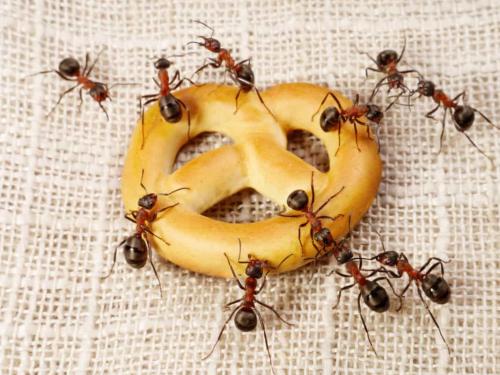

Also, according to old beliefs, if ants are actively running around in your home, in the near future you will see an improvement in material well-being, the source of which may be very unexpected.
Perhaps the hobby of the monthly income, both of all working family members, and one of them. It can also be inheriting or winning the lottery. Moreover, there is a relationship between the number of ants and the amount of wealth awaiting in the future.
An old belief
In the old days, everything was completely different - people were not embarrassed by small insects running around their homes. It was the opposite - the inhabitants of the house could be seriously worried about the absence of ants. This attitude was due to everyday circumstances.
The floors in the huts were either earthen or wooden, but they could not be called dense. Therefore, there were no obstacles for the forest orderlies that did not allow them to penetrate the human vein.
The presence of ants was perceived as a symbol of the well-being and prosperity of the family. It was believed that ants are not able to take root only in the house where negative energy reigns. If disagreements arose between family members, household members swore or resented each other, ants left this unfavorable place.
In the old days, no one thought about driving ants out of the hut, since this action entailed scaring off luck and wealth. There are many ways to think about it these days. If ants do not interfere with household members in any way, they can simply be ignored, since they do not stay in a person's home for a long time. However, if they cause discomfort, it is easy to remove them, and you should not believe in the bad.
Other signs about ants in the home
There are several more beliefs about this phenomenon.It is worth familiarizing yourself with them in order to understand how best to behave when you see ants in your house.
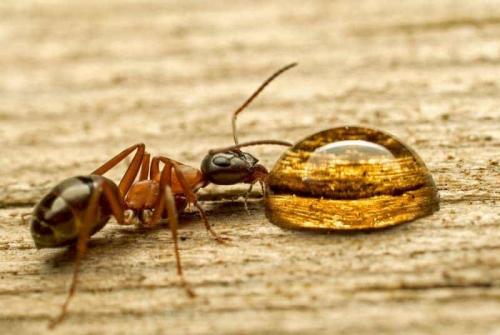

- With ants in the house, you cannot swear and scandal - this way you can call trouble into the house and scare off good luck from yourself. It is undesirable to roll scenes in any case - even in the absence of these insects. However, their appearance and belief in this sign, perhaps, will teach household members to keep emotions under control.
- Favorable signs are ants that have settled not in the dwelling itself, but near the threshold. Such a phenomenon bodes well for good news and pleasant guests. Do not under any circumstances crush them with your feet. It is not worth driving them out, because in the fall or much earlier they will leave on their own.
- An equally favorable omen is an anthill that appeared in the middle of a garden or yard. This sign promises the owners a quiet life in full prosperity and prosperity. According to legends, an anthill is a powerful energy talisman that protects a site and a house from evil, negative energy and other unpleasant phenomena, so you should not break, crush or break it.
- According to another legend, ants bite only unkind people who commit evil deeds, or those who lead a vicious life. Therefore, if your conscience is clear, you should not be afraid of this. However, if you nevertheless were bitten by one of the orderlies of the forest, you should think about your daily behavior.
How to keep reaper ants at home
Now, as a hobby, many people start up so-called ant farms, which are transparent boxes made of plastic or glass. Inside them there is an imitation of an anthill - numerous passages and chambers.
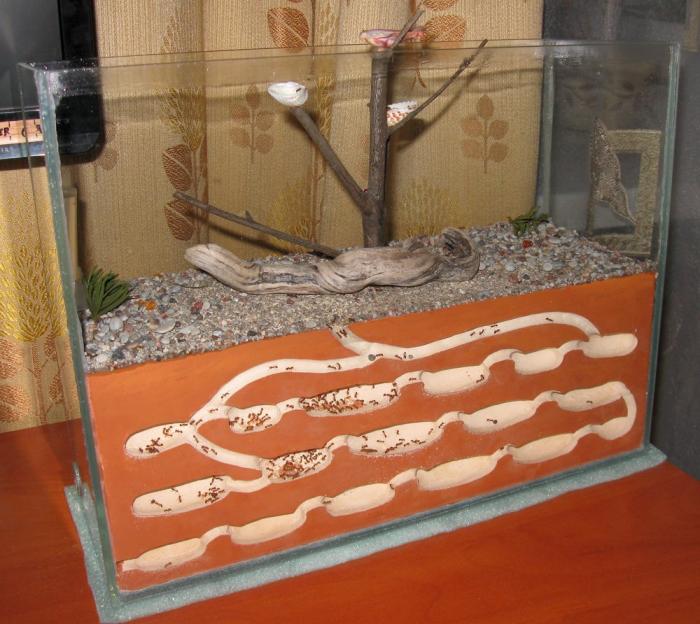

Thanks to the transparency of the walls, you can study the life of insects in detail
Acquisition of an anthill - what kind of anthills are there, their cost
A home anthill, or formicarium, looks like an aquarium or showcase with filler inside. There are simple and complex systems in which a climate is automatically created and maintained that is favorable for the life and reproduction of ants: lighting, humidity and temperature. Sizes are different - from small desktop farms to bulky anthills for the living room or office. The filler for formicaria is used in different ways: gel, gypsum or a mixture of soil and sand.
The so-called Cubus and Colosseum models are in the form of a cylinder, a cube or a double-walled display. The space between them is filled with multi-colored sand, in which the ant colony builds passages and chambers. The cost of such structures is high - from 3 thousand rubles, but the kits include food for ants, sand and other additions.
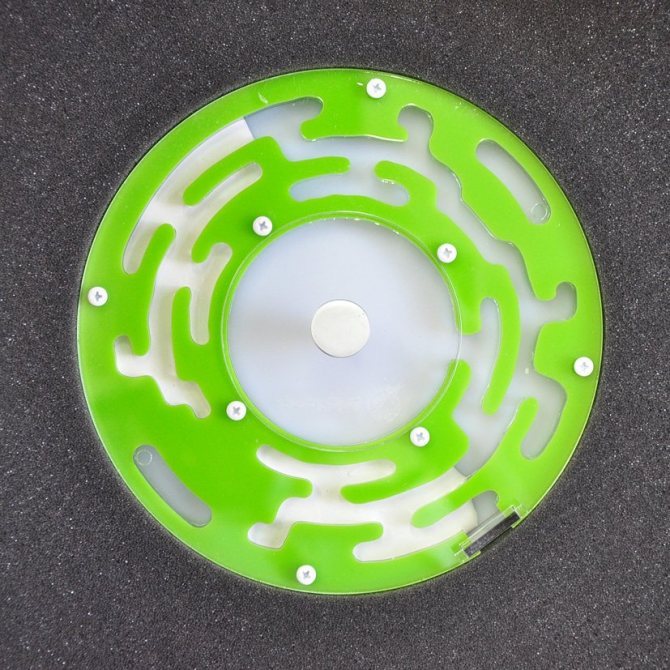

Formicarium of the brand "Colosseum"
An anthill with a gel filler is similar to an aquarium, but filled not with water, but with a transparent gel. Such a house for reapers does not require careful maintenance, but once every 5-7 days, the lid of the aquarium should be opened for a couple of minutes to ventilate. The price of such formicaria is low - from 500 rubles.
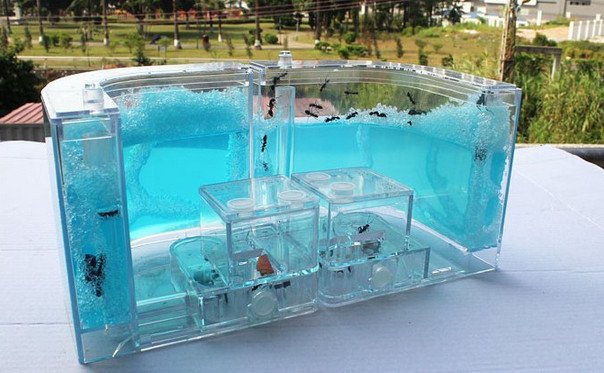

This filler is safe for humans and insects - it is both a habitat and a breeding ground for ants.
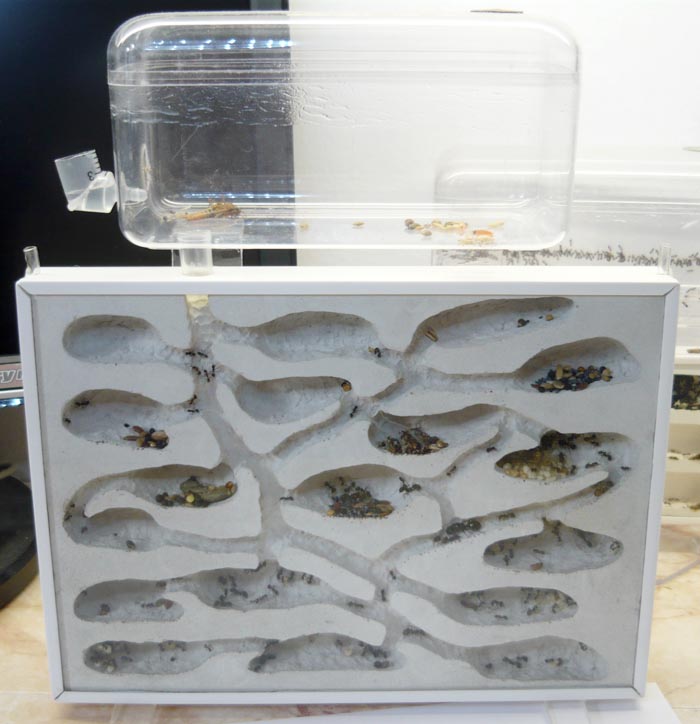

The plaster model is perfect for children and beginners in ant breeding
Making formicaria yourself
If you are not attracted by the prices in stores, then there is an opportunity to make a formicaria with your own hands. For the base, you can take two jars with transparent walls - a large and a small one, so that you can then fill the space between them with the material of your choice. It can be a mixture of soil and sand, gypsum or gel.
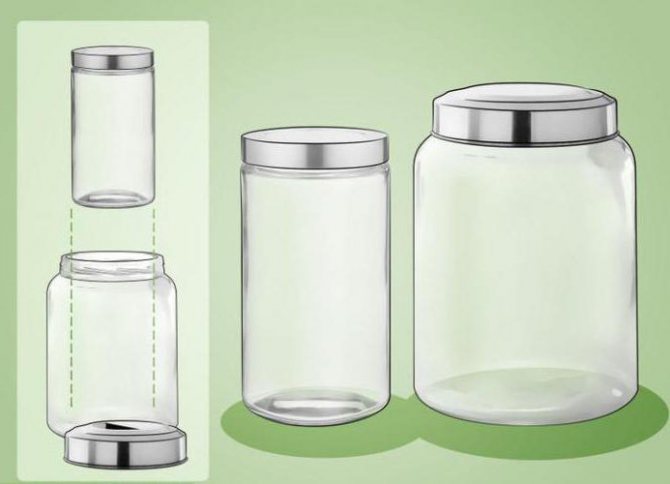

Choose a large jar with a wide neck to make it easier to fit a smaller jar.
Soil and sand farm
First, prepare a mixture of one part sand and two parts soil. Keep the composition slightly damp - it will be easier for ants to break through passages and chambers. The mixture will be required so that the space between the jars is filled 1.5 cm from the edge of the vessels.Make small holes in the lid for air circulation.
Gel farm
It will be interesting for both adults and children to make such a farm on their own. To do this, you need gelatin and a flat container with a lid and transparent walls.
Pour 0.5 liters of hot water into three 15-gram gelatin sachets and stir well until the gelatin dissolves. Then add another 0.5 liters of water. Cool the resulting composition, pour into the selected container and refrigerate until it solidifies. Then remove the container and wait for the mass to warm to room temperature. Since the gel composition is also food, it is not necessary to feed the ants in such an anthill - they will get the necessary food from their house.
Gypsum truss
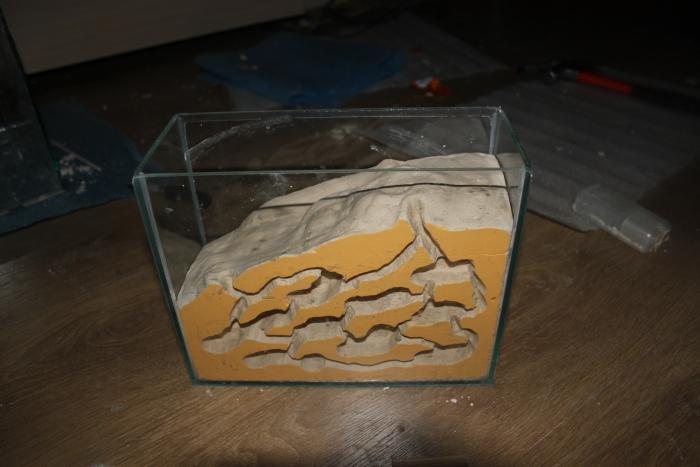

This formicaria is attractive in that it is completely open for observing ants.To create an anthill, take a transparent container, then dilute the gypsum until it becomes thick sour cream. Pour the composition into a plastic transparent container, placing a plastic tube at the side. This is necessary in order to then add water to the gypsum to maintain moisture in the formicaria.
The workpiece dries completely in about a week. After three to four days after pouring, remove it from the mold. To make the gypsum come out of it easily, immerse it in hot (not boiling water) water for thirty seconds.
Now show your creativity - draw the passages and rooms on the plaster cast. The composition is still raw, so you can easily scratch out any tunnels.
Drill the entrance for the future tenants of the farm with a drill. Take any tool convenient for you (stationery knife, screwdriver, etc.) and start making tracks according to your drawing, choosing plaster from them
Proceed with caution so that the wet composition does not crumble
Make indentations at the bottom of the formicaria to better distribute water and moisturize the nest. Do not forget about the ventilation holes in the container. Drill them with a drill (0.5 mm diameter) in the cover and side walls.
After that, you need to thoroughly dry the gypsum base and place it back in the container. If it does not fit, soak the mold in hot water again for 30 seconds. Your nest is ready to move in.
What ants attack our apartments, and how are they dangerous to humans?
We all saw black ants of various sizes in the forest. At the same time, pets differ in size and color. The individuals living with us were red, it even seemed to me that they were fiery red and very small, literally a couple of millimeters in length.
Of course, I went online to read about them in order to find out as much as possible about the enemy.
It turned out that this species, called "Pharaoh", lives exclusively in houses, since they are not at all comfortable on the street. Despite their small size, they can cause great harm to a person (not only morally, but also health).
We learned that the facts of their harm to us include
- Transfer of bacteria.
On their paws, ants carry all the bacteria that come their way. If at least one of them, after visiting the trash bin, walks across the table or sugar bowl, the household will at least get poisoned. - Helminths.
If you have animals in your house, then you can be sure that the lumps carry eggs of various types of helminths on their paws. - The uneaten deposit.
Everything edible that insects of this species find, they carry to themselves, that is, under your baseboards, to any crevices and other places that they consider their home. As a result, organic products begin to rot, causing mold and mildew to appear, which are also not only harmful, but also dangerous to human health. - Infection.
As strange as it might seem, ants are attracted by the smell of human sweat and blood. If insects get to your bedroom, they will definitely crawl into bed, attracted by smells. If they get into the area of open wounds and abrasions, they can lead to infections.
Having read all these horrors, we firmly decided to use all possible means to get rid of unexpected and uninvited guests.
How long and when does wintering end?
The duration of wintering depends on the climate where the ants live. Overwintering of different types of insects differs significantly. Camponotus sp. hibernates for 3-5 months, and Myrmica sp. only 1-2 months. Lasius (Niger) can do without it, but it is recommended to do it at least once every two years. Polar ants hibernate for 8-9 months a year, and in the remaining time they try to feed their future offspring. This is not always possible due to the short period of time without snow. Fortunately, in such extreme conditions, they successfully survive. Inhabitants of warmer regions can winter only 2-3 of the coldest months of the year. Inhabitants of the southern climate are more fortunate. They very rarely enter the sleep state. The harshest times are the exception. Active individuals continue to instinctively prepare for winter and devote their time to collecting seeds and other food, digging new tunnels and do not forget about feeding the larvae.
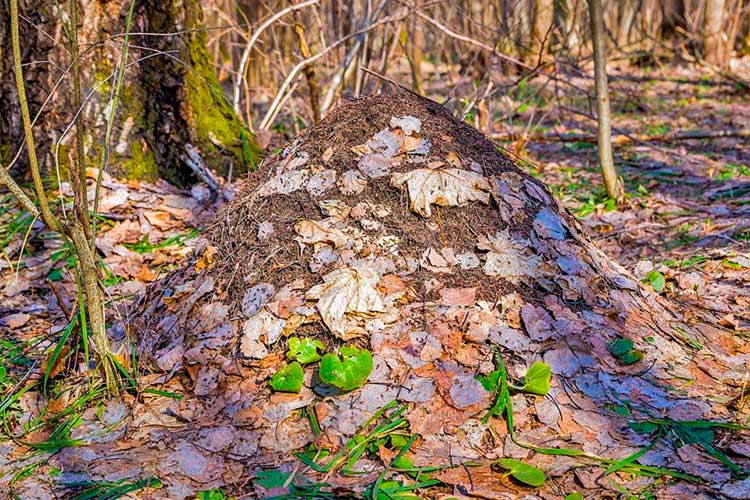

Ants learn about the end of cold weather thanks to the first spring signs. The top layer of the soil warms up with the arrival of spring heat from the sun, and the snow begins to melt. Soil temperature rises, and scout ants uncork some of the entrances to allow warm air to enter and warm the passages and chambers. It often happens that during such a period of time, their upper tunnels are filled with water, or other insects are found in the dome that have found shelter there.
There are more than 14,000 species of ants, 300 of which live in Russia. In countries with warm climates, these insects are active all year round. But how they winter is not yet fully understood.
It is known that in some species of ants, adults (imato) and even larvae enter the state of diapause ("winter sleep"). However, most ant species do not sleep, but in winter their life processes slow down, and they spend this season in a state of reduced activity.
Are the ants sleeping? So do ants sleep?
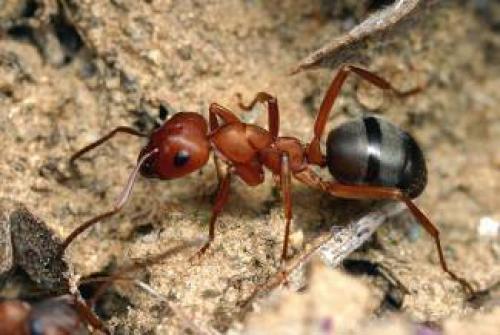

Human physiology is an extremely mysterious thing. We have been saying for a long time that sleep is the best medicine, but at the same time we do not even realize how much sleep is useful for us and our immunity. Scientists still cannot solve the riddle of dreams that often accompany sleep. Even more questions from the scientific community are raised by the so-called lucid dreams, which a person can control with the power of his consciousness (or subconsciousness) during falling asleep and various stages of sleep.
It would seem that dreams are inherent in all living beings on our planet, but in reality they are not. At least, it was considered so for a relatively long time. There are living beings in the world who do not need sleep at all. These creatures include ants. There are a number of insect scientists who claim that ants do not sleep during their entire life. This idea was prompted by scientists numerous studies of the life of these insect workers. Video
materials that were obtained after studying many anthills in different parts of the world show that ants, in most of their mass, are constantly in motion, which gave rise to the hypothesis that ants do not need sleep.
Recently, however, this hypothesis has come under criticism. Video footage was presented showing ants in a static state. They literally froze on the road, even tilted their heads and their antennae stopped moving. This gave rise to a new hypothesis. The hypothesis is that stopping the ant for a few minutes is its sleep. This hypothesis also has some kind of confirmation.The ants that ran past the "resting fellow" touched him, but he did not react in any way or his reaction was inhibited.
Research on queen ant stands out. They were originally also thought to be awake. But it is difficult to imagine a living organism, whose life can last more than 10 years, without sleep during all this time. So, it was found that the uterus also goes into an immobilized state for about several tens of seconds. The video camera, placed in the chamber of the ant queen bee, captured the fact that the queen bee "falls asleep" up to 100 times a day. The total duration of daily sleep is comparable to the duration of a person's daily sleep - about 8 hours a day.
That is why it is believed that absolutely all living beings are subject to sleep, only this dream manifests itself differently in each of the cases. For example, a shark can enter a sleep state while moving. However, her movement in the water at the moment does not mean that she is awake.
Chemical methods of insect control
If simple methods of struggle do not help, we turn to chemical methods. But you need to remember that the drugs are poisonous, be sure to protect your hands and face before using.
The most purchased and effective drugs:
Ant-eater
The active substance, diazinon, acts on the intestines of the individual. Has a chain reaction - relatives, in contact with an infected or dead, also die. The solution is prepared taking into account the 1: 1 ratio, but it is not stored in a diluted form. All prepared liquid must be used immediately.
Karbofos
The active substance, malathion, acts by contact, through the outer shell and through the intestines, which increases the effectiveness of the method and gives a quick result. A pack of 60 grams is diluted into 10 liters of water, which allows you to process 5 acres of land. The solution is not stored, you must use the entire diluted product. Has a pungent odor.
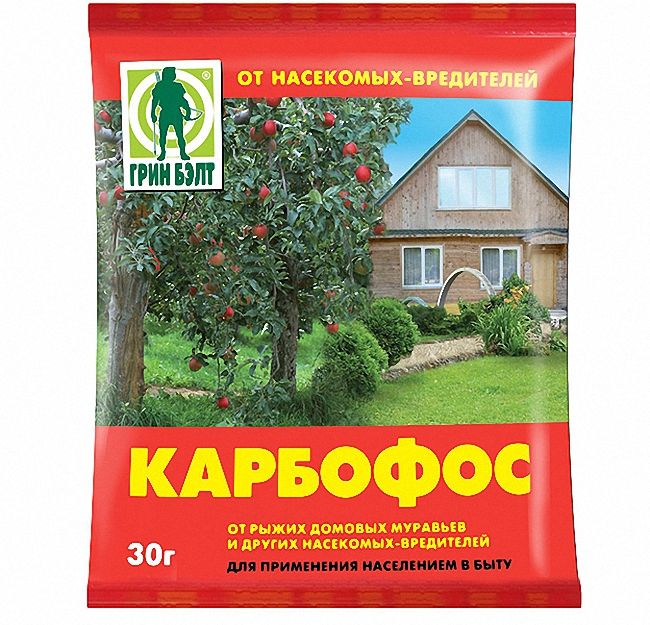

Muravyin
The active substance is an insecticide. Intestinal method of influencing an insect. It is not necessary to dissolve, it is sold ready-made. It is necessary to fall asleep in the anthill. One pack can destroy an entire colony. Safe product for the environment. One of the advantages of this tool is its affordable price.
Delicia
The active substance is an insecticide that affects the intestines of the ant. Can be used dry or made into a solution. Powder is more effective. Fall asleep in an anthill, in places of accumulation. 100% result. Safe product for the environment.
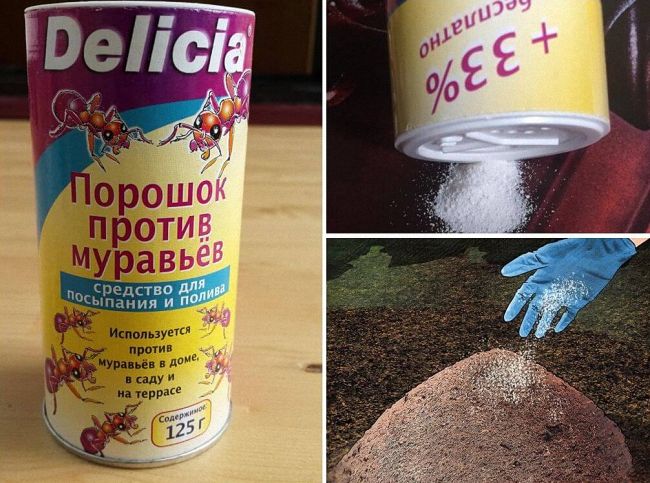

To prevent the fight against ants and the consequences of the damage caused by them, it is necessary to remember about the timely cleaning of the garden, summer cottage, garden plot. Deep digging of the land is required in spring and autumn, after harvesting. In addition, do not leave uncleaned plant residues, foliage, spoiled tree fruits uncleaned for the winter. Clean weeds regularly. Watch out for food waste, do not litter the area with construction debris. Then the ants will not harm, but will become allies in the struggle for purity.
Identifying scout ants and preventing massive insect attacks
At the first signs that the first small ants have started up in the apartment, you need to prevent their massive invasion. At first, these may be "scouts" who reveal the presence of food supplies, and then report them to the rest of the colony. So there is no time to waste. You need to start cleaning right away. Products should be packed in sealed containers or bags. Remains of meat, sweet, fatty food should be wiped off the tables. Do not leave dirty dishes after cooking and eating. It is recommended to regularly wipe the countertops, drawers and shelves with a vinegar solution. Thanks to it, the surfaces will not only become cleaned and disinfected, but also acquire a smell that is unbearable for ants.Garbage should be taken out as often as possible, and the bucket should be kept tightly closed.
How do ants prepare for winter?
They do a lot of work for adequate nutrition and a quiet winter. First of all, ants prepare a sufficient amount of food, for this the workers collect caterpillars, bugs, bugs and other garden insects that live in their area. A certain part goes to feeding the larvae, and the rest is folded into special chambers suitable for wintering. This way they will not have to leave their "rooms" and run the cold into the nest. Also, the harvesting diet includes different parts of plants, their fruits and seeds. In addition, they bring live aphids into underground rooms, and eats aphids with pleasure.
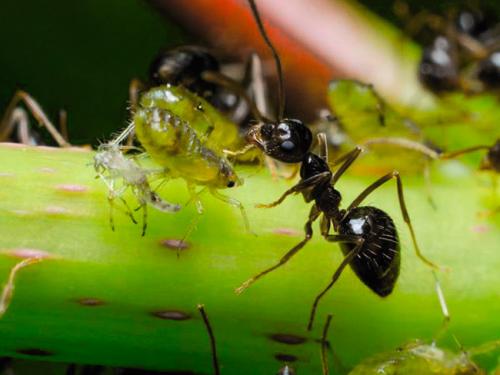

Preparation is not complete without insulation of the home. Working ants build a kind of hill (dome) over the shelter, which provides warmth during severe weather conditions. In red forest ants, such a hill reaches a width of more than 1 meter, and a height of 50 cm. This heap contains passages and chambers. The collected loose material does not allow the cold to get into the underground rooms. They also prepare the compartments for wintering by insulating them and storing food.
Adult insects take care of the next generation. In order to prevent the larvae from dying, they are transferred to chambers where it is warmer and the microclimate is satisfactory. There, the air temperature will practically not fluctuate and drop to critical points.
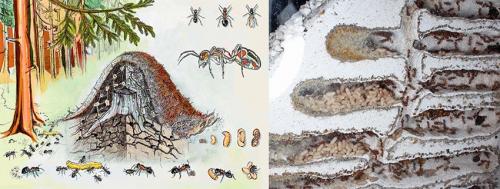

With the onset of late autumn, little workaholics clog all exits from their homes. The material is earth, clay, dry leaves, etc. Thus, they provide maximum warmth to their home.
In the event of freezing of the upper layers, the owners transfer the supplies deep into the depths, where the cold cannot reach and spoil the food.
Every year, before the temperature drops, they expand their home and strive to make it even deeper.
Preparing for the cold
In the life of an anthill, preparation for the winter cold is the most important period. Since spring, all efforts of the colony have been focused on procurement of resources for wintering and the appearance of young animals before frost. It is reliably known that many ants do not fall into suspended animation in winter, but lead an active lifestyle, although not the same as in the warm season. How they prepare for wintering has been studied by both scientific myrmecologists and amateurs. The main stages of preparation for winter are:
- food preparation;
- warming the anthill.
Preparing food for food in winter, insects extract and bring dry fruits, seeds of various plants, as well as dried parts of the plants themselves to their home. Insects drag the prepared food from one place to another throughout the winter, which prevents it from deteriorating in conditions of high humidity, and the insects themselves do not die of hunger.
Eggs laid in summer are also a good help in winter. They are sterile (in another way - trophic) and serve as a good top dressing in the cold season.
The next step is to prepare your winter home. Ants move to the lower floors of the anthill, which are located at a depth of 1.5 to 2 meters, where they are quite comfortable. The constant temperature of the soil at this depth is conducive to wintering in fairly good conditions. To warm the anthill, insects, even before the onset of a cold pore, carry various debris and earth from it to the surface. This is necessary in order to cover your home with a so-called fur coat. This is how insects are prepared for winter.
Before the onset of the winter season, insects begin to actively prepare for wintering. Successful overcoming of cold weather depends on how the ants prepare for winter. To do this, they stock up on a large amount of food and insulate their nest outside and inside. An additional layer of twigs and leaves on top of the hill keeps the warmth inside the dwelling.The upper floors of the house can be prone to freezing, so all food and nutritional supplies are transferred to the lower levels of the anthill.
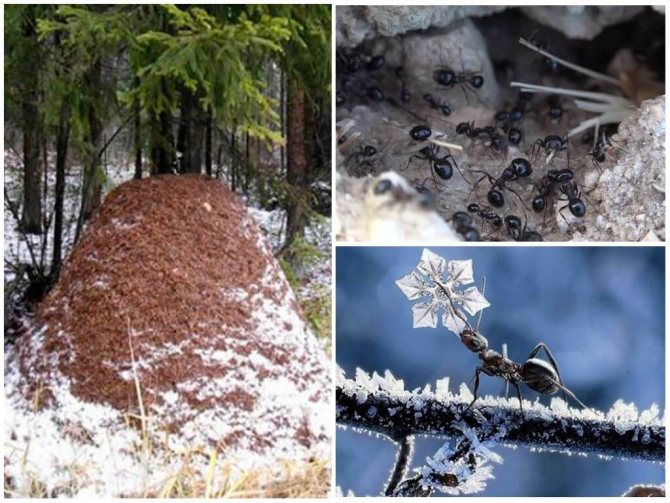

Anthill in winter
The next stage is the preparation of a special chamber where ants hibernate. There they spend most of the winter, leaving the compartment only when necessary. At the deep level of the anthill, the temperature in winter is kept around zero, which allows adults to live there and lead a measured life.
For the winter, working insects cover all entrances to the anthill with earth and clay and insulate the corridors from the inside. Shepherds drive herds of aphids to the lower tiers, where they continue to look after their "cows" and receive a sweet treat from them.
You can open all the windows in frosty winter and go to visit. Ants die quickly from the cold. Has such a way of dealing and disadvantages.
- The nest with the uterus can be located in the wall near the radiator and then the cold will not reach them.
- If you turn off the heating, you need to drain the water, otherwise it will freeze and burst the pipes.
- Ants can come from the next apartment. After freezing, they will be absent for a maximum of a week.
You can try to freeze the ants, but this method has its drawbacks.
Cold removal of pests is possible in the country. It is necessary to freeze it well, after washing everything and hiding the food. Then cockroaches, moths, bugs will disappear at the same time.
Economic significance
Harmfulness. The red forest ant causes unconditional harm, protecting various species of aphids in orchards, in particular, the Apple green aphid (Aphis pomi).
Benefit. Along with the harmfulness, there is a clear benefit of the presence of this species in forest biocenoses. Red forest ants actively destroy various pests of the forest and garden. At the same time, they prefer to destroy exactly those insects that are in the outbreak phase. Preference is given to caterpillars not covered with hairs, for example, Pine moth, Winter moth, Pine scoop, Oak leafworm. Destroyed by ants and sawflies.
Living secretively (bark beetles), sedentary, poisonous insects and hairy caterpillars are almost not touched. But, at the same time, a clear relationship has been established between the presence of ants and the increase in the number of various species of birds, actively destroying these insects.
In parallel, there is an increased activity of the destruction of harmful insects by ants on those trees where they protect the aphids.
Considering all of the above, the use of extermination measures against families of red forest ants should be prescribed only when the expected positive effect from the elimination of ants exceeds the benefit derived from their presence in the plantation.
Anthill life in winter
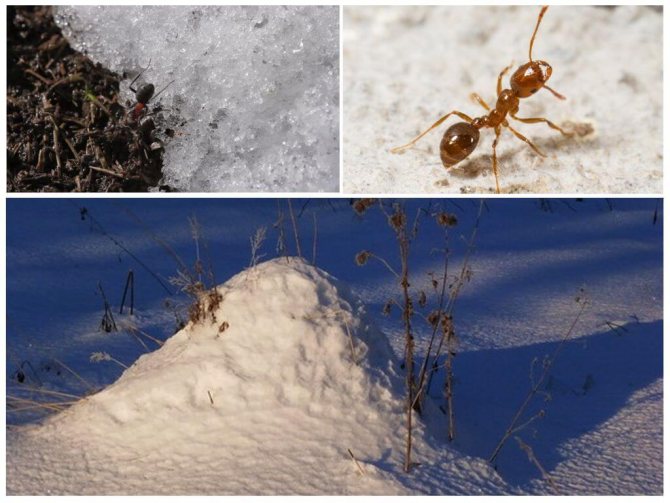

Ants in winter
With the onset of cold weather, life in the colony slows down. Ants become less active in winter, but continue to live, performing their daily duties. The uterus begins to give birth less often or completely stops laying eggs during this period, and the larvae and pupae slow down their development.
Aphids without a constant source of herbal feeding die, and the ants feed on the stocks accumulated over the summer. Some fall asleep in winter so as not to waste their energy.
With the onset of the thaw, a special detachment of scout insects opens several entrances for fresh warm air to enter their house. The first signs of spring help them finally wake up - a large amount of moisture from the melting snow. The upper tiers of an ant dwelling are often flooded with melt water.
When the ants wake up after winter, they are waiting for restoration work to repair the home. In addition, they will have to expel from the upper floors of their house those insects that have found shelter there during the winter cold. Thanks to the well-coordinated work of the entire ant family, the anthill is rebuilt from year to year and increases in size.
Where they hibernate
Chambers where ant larvae hibernate differ from summer chambers in winter. Before the onset of cold weather, adults are carefully prepared - in order to warm the house, all the holes in it are well clogged with dry grass along with the earth. The holes open only for the time when insects need to replenish their food supplies. But this is done only when the air temperature rises slightly.
If in winter the upper part of the anthill suddenly gets wet, a special rescue team drags food supplies into deeper compartments. Insects hibernate in their cozy shelter until March-April. A sign of the imminent appearance of goose bumps on the surface will be the deposition of eggs by the uterus and the gradual resumption of work. In the spring, the life of adults becomes active and fully resumes.
Ants living in different regions winter in different ways. For example, polar species hibernate for a long 7 - 9 months. And during that small warm period of the year, when there is no snow, they manage to feed their offspring. Insects that are residents of Kazakhstan, the Mediterranean, Central Asia, that is, the hot southern regions, winter for no more than 1 - 2 months. Ants living in Turkey do not winter every year. It only occurs in insects in severe weather conditions.
But goose bumps are prepared for wintering every year. They do home improvement, collect seeds for food supplies, and feed larvae. The ant, a small pest of the pharaohs, known to many, is never engaged in preparation for wintering, or in fact herself. Since his homeland is the tropics, where there is no climate change. He feels great in the homes of our compatriots and dies only if he happens to be on the street.
We suggest that you familiarize yourself with: Pickled squash for the winter You will lick your fingers
They contain sugar, which is transformed into glycerin inside the ant's body. It reaches about 30% in the body of an insect, helps it to preserve itself and not turn into ice when it is cold. For normal wintering, the temperature in the underground ant house should be at least -2 degrees.
I wonder if all ants have a rest in winter? And what do those who work do?
Ant queen
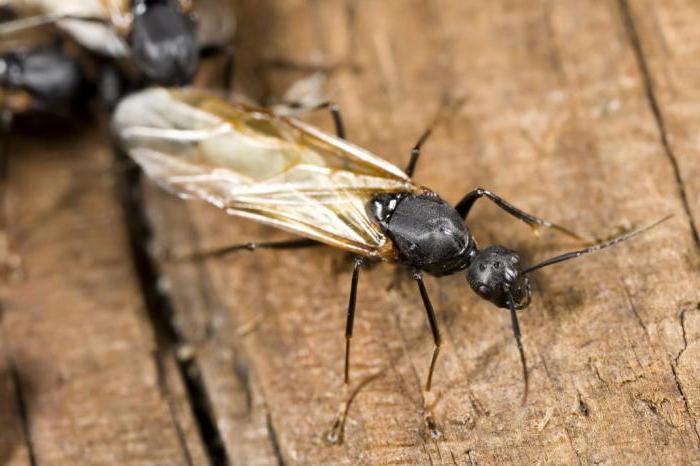

What does an ant's uterus look like? In most colonies, the individuals that are responsible for the reproduction of offspring are significantly larger in size than ordinary working insects. The uterus can be identified by the presence of wings that it needs to find new habitats. However, when settling in a colony, they may disappear. In this case, in the place where the cephalothorax passes into the abdomen, corresponding marks in the form of small tubercles remain.
Scarers and traps
Insects cannot tolerate ultrasound. Short waves, which a person cannot hear, scare away insects at a certain distance from themselves. You can buy such a repeller, plug in the device and forget about the ants.
Unfortunately, ultrasound has a negative effect on children and some pets. Ultrasonic waves can change the natural frequency of a person, worsen his physical condition.
DIY ant trap
Traps are placed in places where ants leave their holes. The cardboard is greased with glue that does not dry out for a long time or double-sided tape is glued. In the center, dripping with jam or honey. The ants will seek to feast on and get bogged down. Gradually, you can exterminate all working insects, the rest in the hole will die of hunger. Only it will take a long time to set traps, depending on the size of the colony, 1 - 4 months.
A little about hibernation
In this video, you will learn how these insects survive the winter.
Those ants that do not hibernate move rather little and also rarely eat food. But when the larvae spend the winter in the dwelling, the adults continue to actively feed them.Such species of ants carry out thorough preparation for the winter period, collecting larvae in special chambers, where it is possible to create a comfortable microclimate.
In order to survive, workers have been storing food supplies since autumn, which should be enough before the snow begins to melt. With the onset of cold weather, the labor force makes repairs to the home in those places where it is necessary. Also, their responsibilities include maintaining a comfortable microclimate for the survival of the entire insect population.
This video shows what happens to ants after their winter sleep.
Some adults spend the winter in hibernation - diapause. With it, the work of the internal organs of the insect does not stop, but only slows down. Other species are active throughout the winter, although their livelihoods are much lower than in summer.
There are also ants in which only adult insects hibernate. These are the species that do not hibernate. For example, the larvae need protein food, which is nowhere to be found in winter. By the time of the cold weather, adults emerge from the eggs laid in the spring and hibernate. And in the spring, the uterus lays eggs again, when protein food can already be found.
There is more than one interesting fact from the life of insects. For example, once on Kolyma in the recent past, the lowest possible temperature for ants to survive was -58 degrees. Interestingly, metabolism has not stopped in the body of the larvae. In such conditions, they are practically motionless.

